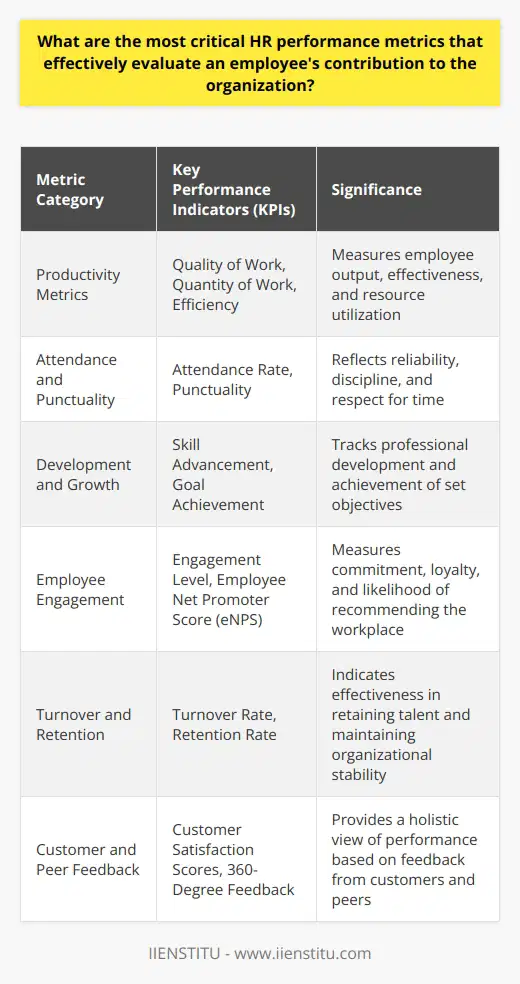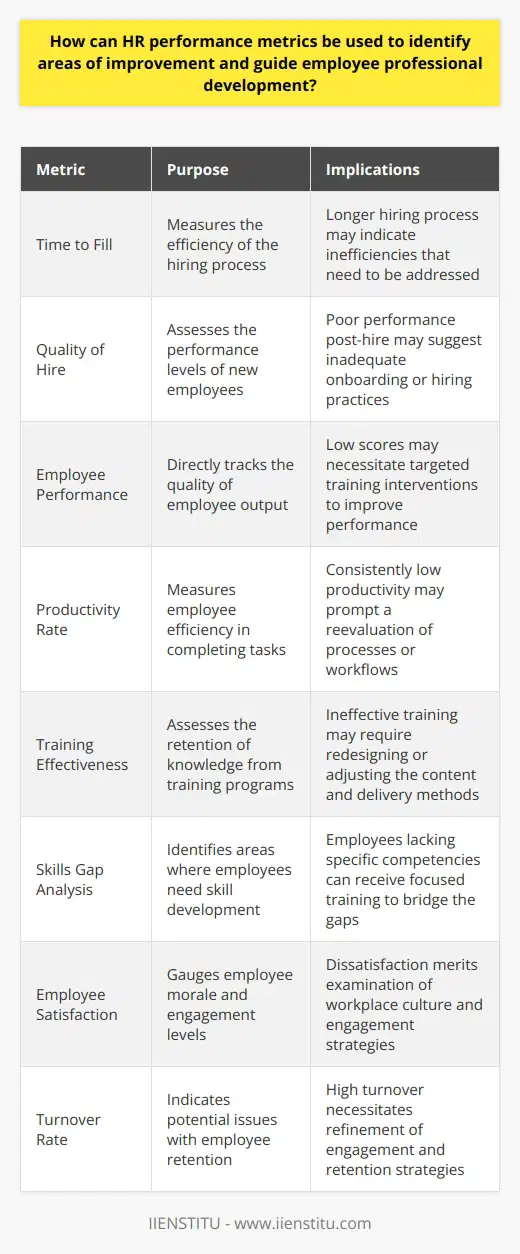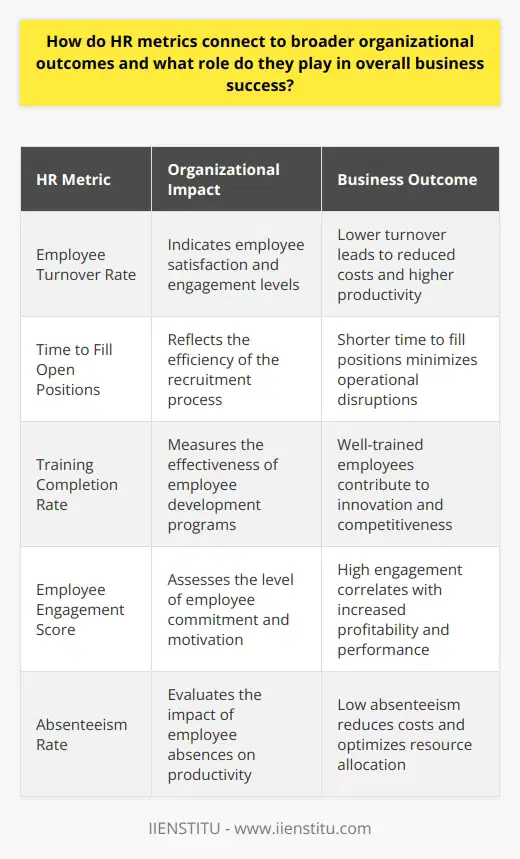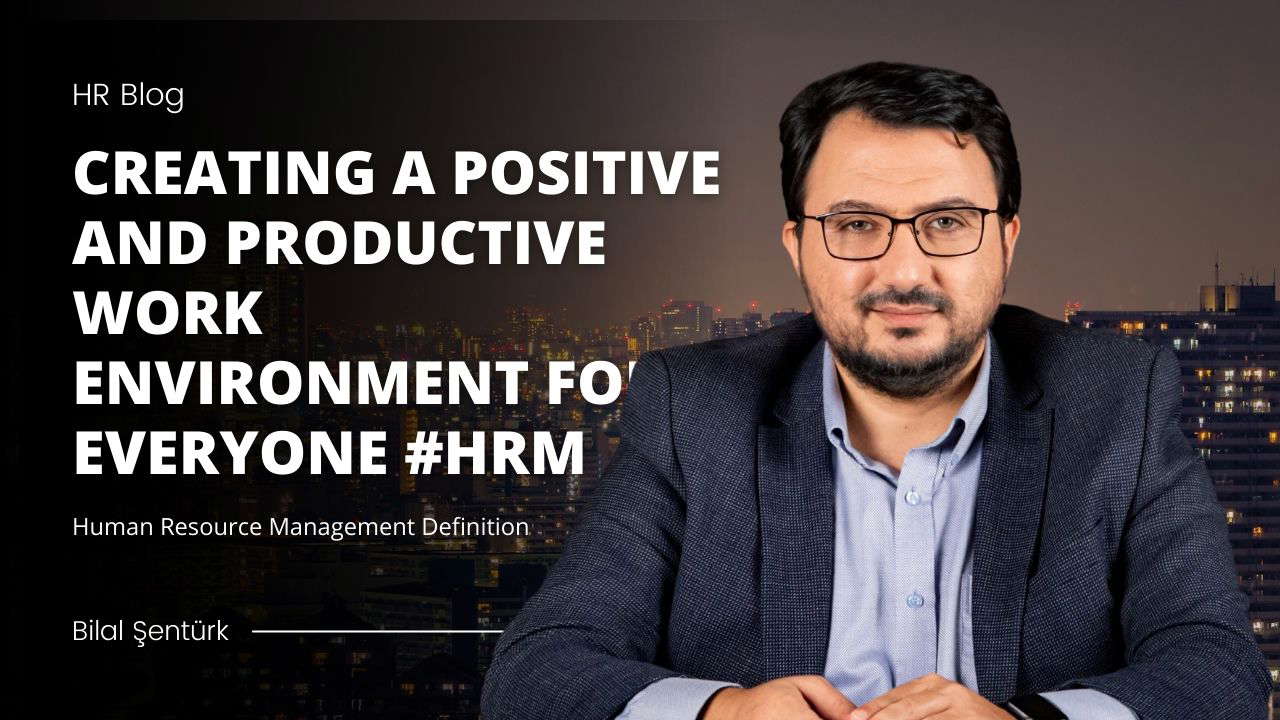
In the fast-paced, ever-evolving landscape of modern business, the role of Human Resources (HR) has become more critical than ever. As organizations strive to align their workforce with strategic objectives, HR employee performance metrics have emerged as essential tools for evaluating individual and team contributions. This article delves into the intricacies of these metrics, exploring their significance, varieties, implementation strategies, and methods for continuous improvement. Through a blend of academic insights and practical examples, we aim to provide a comprehensive understanding that resonates with HR professionals and organizational leaders alike.
The Significance of HR Employee Performance Metrics
"What gets measured, gets managed." - Peter Drucker
This famous quote by management guru Peter Drucker encapsulates the essence of why HR employee performance metrics are so crucial. By quantifying the qualitative aspects of work, these metrics provide a clear and objective framework for assessing employee contributions. They serve as a yardstick, enabling managers to accurately gauge whether individuals are meeting, exceeding, or falling short of expected standards.
But the importance of HR metrics extends far beyond mere evaluation. When properly implemented, they can:
Optimize performance management processes: By providing insights into areas where employees may require additional support or development, HR metrics can help refine performance management strategies. This can lead to targeted training programs, more effective resource allocation, and the identification of high-potential employees for succession planning.
Influence strategic decision-making: HR metrics offer a robust evidence base for formulating strategies that are likely to produce favorable outcomes. By interpreting these metrics, executives and HR leaders can discern underlying patterns and trends that inform critical business initiatives. For instance, if a significant correlation is found between employee engagement levels and customer satisfaction scores, an organization may decide to invest more substantially in workforce engagement programs.
Drive continuous improvement: Regular analysis of performance data allows HR to fine-tune strategies and foster an environment where continuous improvement is ingrained in the organizational culture. By identifying areas of strength and weakness, HR can implement targeted interventions to enhance overall performance.
To illustrate the impact of HR metrics on decision-making, consider the following real-life example:
A technology firm noticed a sharp decline in its innovation index, a metric that quantifies the rate of new ideas or products generated over a period. Upon investigation, the firm attributed the slump to employee burnout. In response, leaders implemented a new policy to encourage work-life balance, including flexible work arrangements and mandatory time off. The subsequent rise in the innovation index underscored the validity of the metric and the efficacy of the strategic intervention.
Exploring the Varieties of HR Employee Performance Metrics
HR employee performance metrics come in various forms, each offering a unique perspective on employee contributions. Let's explore some of the key categories:
Quantity-Based Metrics
These metrics focus on the tangible aspects of work, measuring elements such as:
Output: The number of units produced, customer tickets resolved, or software features developed.
Efficiency: The resources utilized, including time, to achieve those outputs. For example, a team's efficiency in completing a project could be measured by comparing the planned versus actual hours spent on the project.
Productivity: A combination of output and efficiency, evaluating how effectively employees use their time and skills.
Quality-Based Metrics
While quantity is important, quality-based metrics ensure that the work meets specific standards. These may include:
Accuracy: The precision of work, such as the number of errors in a report or the percentage of defect-free products.
Effectiveness: The extent to which objectives are achieved, such as the percentage of sales targets met or the number of successful project deliveries.
Satisfaction: The contentedness of clients or employees, often measured through surveys or feedback scores.
Behavior-Based Metrics
Behavior-based metrics offer a different lens through which to view performance, concentrating on aspects of employee behavior such as:
Engagement: The emotional investment and commitment employees have towards their work, often measured through annual surveys.
Collaboration: The number and quality of cross-functional projects an employee participates in, or the level of teamwork demonstrated.
Attitude: Derived from testimonials, commendations, or peer feedback, reflecting an employee's approach to work and interactions with colleagues.
To illustrate the application of these metrics, consider a customer support center that adopts a set of performance metrics encompassing all three categories:
Quantity is measured by the number of support cases closed, quality by customer satisfaction scores post-resolution, and behavior by teamwork and cooperation metrics derived from peer feedback. These multi-faceted metrics provide a comprehensive picture of employee performance across various dimensions.
Implementing HR Employee Performance Metrics: A Step-by-Step Guide
Implementing HR employee performance metrics requires careful planning and execution. Here's a step-by-step guide to help you navigate the process:
Define objectives: Clearly outline the goals that the metrics aim to influence. This could be improving productivity, enhancing customer satisfaction, or fostering innovation.
Select relevant metrics: Choose metrics that align with your objectives and are tailored to match various job roles and responsibilities. Ensure that the metrics are specific, measurable, achievable, relevant, and time-bound (SMART).
Train stakeholders: Provide training to ensure that all stakeholders, including HR professionals, managers, and employees, understand the metrics and the reasons for their use. This could include workshops or online certification courses.
Systematize data collection and analysis: Utilize HR software systems where possible to streamline the process of collecting and analyzing performance data. This ensures accuracy and consistency.
Communicate expectations: Managers should clearly communicate performance expectations to their teams and provide regular feedback based on the metrics.
Use metrics for development: Employ the metrics as a tool for positive development rather than punitive measures. Provide employees with opportunities to give input into the metrics that affect their appraisal.
Review and adjust regularly: Regularly review the effectiveness of the metrics and make adjustments as needed to ensure they remain relevant and aligned with organizational goals.
Successful implementation of HR metrics necessitates involvement and buy-in from all levels. HR's role is to design and oversee the metrics system, managers are responsible for communicating expectations and providing feedback, and employees should understand how they are being evaluated.
Overcoming potential challenges, such as resistance to change or data privacy concerns, requires proactive communication and education. Engage employees in the development process, ensure confidentiality of data, and emphasize the benefits of metrics for personal and professional growth.
Evaluating and Improving HR Employee Performance Metrics
"Continuous improvement is better than delayed perfection." - Mark Twain
Just as the business world is in a constant state of flux, HR metrics must also adapt to remain relevant and effective. Regular evaluation and refinement are crucial to ensure that the metrics align with the dynamic goals and priorities of the organization.
The evaluation process typically involves:
Gathering feedback: Seek input from users of the metrics system to understand their experiences and identify areas for improvement.
Analyzing outcomes: Assess the outcomes that the metrics have influenced and compare them against the original objectives. If metrics are not correlating with intended results, they should be modified or replaced.
Considering external factors: Take into account external factors such as economic changes or industry trends that may necessitate a reevaluation of performance indicators.
Adopting a continuous improvement mindset ensures that HR metrics evolve to meet the changing needs of the organization. This approach encourages regular innovation, the inclusion of new data points, and the refinement of existing metrics.
For example, a technology firm revamped its performance evaluation system by incorporating metrics that better captured creative contributions, leading to enhanced motivation among its R&D staff. The result was a marked increase in intellectual property generation and an improved market position.
Conclusion
HR employee performance metrics are indispensable tools in the modern business landscape. They provide a clear and objective framework for assessing employee contributions, optimizing performance management processes, and informing strategic decision-making. By adopting a comprehensive set of metrics and committing to their continuous evaluation and improvement, organizations can unlock the full potential of their workforce and drive success in an ever-changing world.
As business leaders and HR professionals, it is our responsibility to ensure that the right metrics are in place and that they are being used effectively. By taking a data-driven approach to employee assessment, we can identify areas of strength and weakness, implement targeted interventions, and foster a culture of continuous improvement.
So, let us embrace the power of HR employee performance metrics and use them to guide our organizations towards a more successful, more metrics-informed future. The potential is limitless, and the benefits are clear. The question is, are you ready to take your performance management to the next level?
Frequently Asked Questions
What are the most critical HR performance metrics that effectively evaluate an employee's contribution to the organization?
Understanding HR Performance Metrics
Human Resources (HR) performance metrics are vital. They track employee contributions. Proper metrics aid organizational success assessment. These metrics also highlight areas for improvement.
Key Performance Indicators (KPIs)
For comprehensive evaluation, several KPIs are essential. KPIs provide actionable data. They help measure success against objectives. Consider these critical HR performance metrics.
Productivity Metrics
Quality of Work measures output significance. High quality suggests strong employee contribution. It reflects training effectiveness too.
Quantity of Work assesses sheer output volume. More output can signal high productivity. Yet, balance with quality matters.
Efficiency evaluates resource use. It gauges speed and resourcefulness. Efficient employees do more with less.
Attendance and Punctuality
Attendance Rate captures presence at work. Regular attendance implies reliability. It's a basic expectation fulfillment.
Punctuality measures on-time arrival. It indicates discipline and respect for time. Consistency in punctuality points to dependability.
Development and Growth
Skill Advancement tracks professional development. It shows investment in growth. Employees should develop pertinent skills.
Goal Achievement relates to set objectives. Meeting goals denotes focus and perseverance. Failed goals signal need for support.
Employee Engagement
Engagement Level reflects commitment. Strong engagement drives better performance. It's a predictor of retention.
Employee Net Promoter Score (eNPS) measures willingness to recommend the workplace. It's a loyalty indicator. High scores align with high performance.
Turnover and Retention
Turnover Rate shows retention effectiveness. Excessive turnover needs addressing. It signifies dissatisfaction or misalignment with roles.
Retention Rate highlights success in keeping talents. High rates indicate positive organizational health. It supports operational stability.
Customer and Peer Feedback
Customer Satisfaction Scores tie performance to user feedback. Satisfied customers often mean effective employees. It's a direct performance reflection.
360-Degree Feedback gathers peer reviews. It offers a holistic performance view. It mitigates single-perspective bias.
Conclusion
Each metric plays a role. They together capture employee contributions holistically. Organizations should select metrics matching their goals. Remember, no single metric defines contribution fully. Effective use necessitates understanding and balance. These metrics guide towards a more engaged and productive workforce. They strengthen organizational outcomes. They demand regular review and adjustment. Metrics evolve as goals and environments change. This evolution ensures relevance and effectiveness. It keeps organizations competitive and adaptive. Choose wisely, apply carefully, and review frequently. Success hinges on both the metrics and their mindful application.

How can HR performance metrics be used to identify areas of improvement and guide employee professional development?
Understanding HR Performance Metrics
HR performance metrics offer invaluable insights. They measure employee contributions effectively. Metrics illuminate strengths and weaknesses. Data drives the decision-making process. It identifies opportunities for professional development.
Why Metrics Matter
Metrics guide HR and management actions. They ensure alignment with organizational goals. Key performance indicators (KPIs) track tangible outcomes. Metrics demonstrate the return on investment in people.
Areas of Improvement through Metrics
Recruitment and Onboarding
- Time to Fill: Reveals hiring process efficiency.
- Quality of Hire: Indicates new employee performance levels.
A longer hiring process may suggest inefficiencies. Poor performance post-hire may point to inadequate onboarding.
Performance and Productivity
- Employee Performance: Directly tracks output quality.
- Productivity Rate: Measures efficiency.
Low scores necessitate training interventions. Continuous low productivity may prompt process reevaluation.
Guiding Employee Development
Metrics define targeted improvement areas. For instance:
Training and Skills Enhancement
- Training Effectiveness: Assesses knowledge retention.
- Skills gap analysis: Identifies need for skill development.
Employees lacking specific competencies receive focused training.
Engagement and Retention
- Employee Satisfaction: Gauges morale.
- Turnover Rate: Indicates retention issues.
Dissatisfaction merits workplace culture examination. High turnover necessitates engagement strategies refinement.
Leveraging Data for Growth
Data informs strategy. It outlines the framework for actionable plans. HR leverages metrics against benchmarks. Comparisons reveal gaps for intervention.
Continuous Feedback Cycle
- 360-Degree Feedback: Ensures comprehensive review.
- Regular Performance Check-ins: Maintain ongoing development.
Feedback cultivates a growth-focused environment.
Conclusion
HR performance metrics serve as a roadmap. They signal where to direct development efforts. Metrics foster a culture of continuous improvement. They ensure the alignment of employee growth with organizational success.

How do HR metrics connect to broader organizational outcomes and what role do they play in overall business success?
Understanding HR Metrics
Human Resources (HR) metrics measure specific aspects of workforce management. These metrics provide insight into how effectively an organization uses its human capital. Leaders rely on HR data to make informed decisions. Better information leads to better outcomes.
HR Metrics and Organizational Outcomes
HR metrics connect directly to broader organizational outcomes. They tell a story beyond basic operational efficiency. These measures often tie to employee performance, satisfaction, and turnover rates. Such metrics can predict future success or indicate potential concerns.
The Role of HR Metrics in Business Success
Recruitment and Retention: Metrics related to hiring and retaining employees impact costs and productivity. Low turnover rates often mean employees are content and engaged. This can lead to higher productivity and better organizational performance.
Training and Development: Effective training programs show in HR metrics. Skilled and knowledgeable employees perform better. This is evident in increased innovation and a stronger competitive position in the market.
Employee Engagement: Engagement metrics often correlate with profitability. Engaged employees contribute to a positive workplace culture. This encourages teamwork and improves overall business performance.
Performance Management: Performance metrics help ensure employees align with business goals. When employees meet or exceed their targets, it usually results in better financial outcomes for the organization.
Cost Management: HR metrics can reveal the cost-effectiveness of workforce management. Low absenteeism and turnover rates reduce costs. This results in better allocation of resources and a stronger bottom line.
The Strategic Advantage of HR Metrics
Organizations today are data-driven. They must leverage HR metrics to gain strategic advantage. Well-informed decisions about human capital can differentiate a company in the market.
HR Metrics as a Decision-Making Tool
Leaders use HR metrics to shape strategic initiatives. They align employee goals with broader business objectives. Informed HR policies foster a productive workforce. A productive workforce drives organizational success.
HR metrics influence talent management. They offer insights into workforce needs. These insights enable leaders to fill skill gaps efficiently.
Data aids in forecasting and planning. Leaders can predict hiring needs. They ensure the organization adapts to changing workforce dynamics.
Metrics monitor the impact of policies. HR can tweak strategies for better outcomes. They ensure investments in human capital are yielding results.
Conclusion: The Vital Connection
HR metrics are vital for business success. They link employee well-being with organizational outcomes. Metrics like turnover, engagement, and performance have direct business implications.
Integrating HR Metrics for Overall Success
Successful integration of HR metrics into broader business strategies is key. It fosters organizational resilience. It ensures a competitive edge in a fast-evolving marketplace. HR metrics are not just numbers. They are pivotal in driving business forward.



